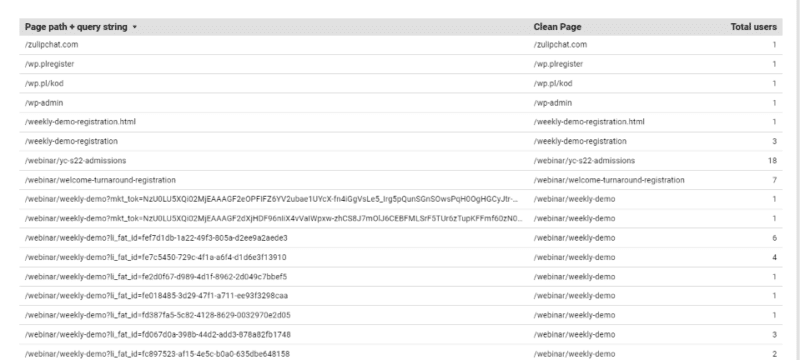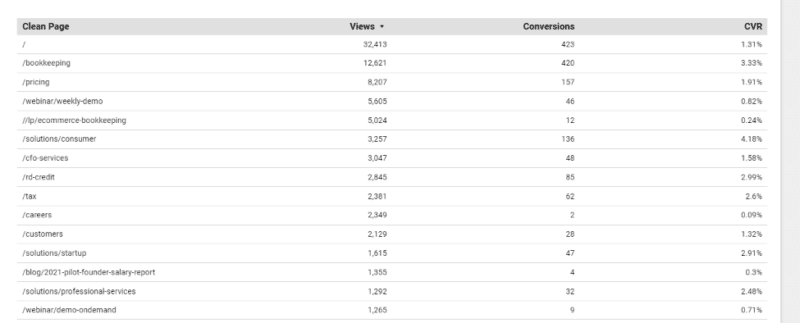How GA4, data modeling and Google Ads work together
Google is moving quickly to a future of data modeling. Here’s how paid search marketers need to approach the analytics shift.
There’s a lot going on in the world of Google Analytics 4 right now, as July 1 continues to get closer.
Earlier this month, Google introduced a new, more flexible tag built to work seamlessly with GA4 and Google’s suite of ad platforms, including Google Ads.
Google might have indirectly acknowledged that advertisers have a lot to process when it recently announced that cookies will have a longer shelf life on Chrome than previously reported.
This article will break down how paid search marketers need to approach the analytics shift:
- The philosophy.
- The differences and how to adjust.
- The timing for migrating.
- And a reporting workaround to replace some insights you’d otherwise lose in moving from UA to GA4.
A new age of marketing analytics
iOS14, CCPA, GDPR – all of these acronyms have put fear in the hearts of marketers over the past few years.
Collectively, they’ve moved the marketing world into an age of user privacy by severely reducing things like automatic cookie tracking and in-app activity tracking in marketers’ data portfolios.
To make up for losing reliable data collection mechanics and tying actions back to specific users, Google is moving quickly to a future of data modeling.
Essentially, the search engine uses AI to fill in data gaps left by privacy regulations, browser limitations and obscured cross-device behavior.
Data modeling in GA4 doesn’t include any offsite data unless you take the effort to implement it (more on that in a bit), but it does include all sources of traffic and engagement, not just Google sources.
One attribute of Google’s analytics shift is that it’s designed to be flexible and should be relatively easy to adapt depending on how the landscape shifts.
GA4 relies heavily on first-party data, which is something you own and will always be able to access.
It’s a more flexible, customizable reporting setup than UA (which is both good and bad in that you need more resources to set it up, but it’s got a lot more potential for rich insights).
Combine that with the new tag, which doesn’t require nearly as much code or customization, and you can see that Google is setting up a future where marketers will be able to self-serve to get all kinds of data that can help them optimize their campaigns.
One big data difference: Events vs. Goals
If you’re making Google Ads decisions based on data like sessions and pageviews, it’s time to shift your strategy.
GA4 is replacing those with Events, which means secondary metrics like bounce rate (as we know it), time on site, and pages per session won’t be available to you for much longer.
Instead, GA4 is introducing new metrics including “Engaged sessions”, which at this point can mean anything from a session longer than 10 seconds to a session that ended in a conversion to a session where the user bounced back and forth between screens.
As I see it, that can be directionally useful in determining whether a channel has a relatively high or low proportion of engaged users.
Another new metric, which I consider about as significant, is “User engagement,” which Google describes as “the average length of time that the app was in the foreground or the website focused on the browser.”
Other differences in data
When you’re preparing to migrate your audiences from UA to GA4, know that not all dimensions will translate.
For instance, “session”-related dimensions like next page path won’t port over because GA4 is measuring sessions differently.
That said, GA4 is built to let you customize the dimensions you find important, so you’ll be able to recreate those insights on your own.
One more change to note, while we’re on the topic of audiences, is that GA4 is limiting each property to 100 audiences, a huge reduction from UA’s cap of 2,000.
I’ve personally never pulled more than 200 audiences per property, but if you have, say, a ton of remarketing audiences built around GA metrics, you may have to consider paying for GA360. (If I had to guess, I’d say this won’t be a widespread issue, or Google wouldn’t have been so aggressive about curtailing the limit.)
Next steps: 3 things paid search marketers can do now
1. Decide on a full data picture
Overall, marketers should be orienting their analytics around business outcomes, not just a conversion firing on a page.
It’s smart to start measuring in terms of things like revenue and how much you can attribute to advertising.
For that, no matter how good your setup in either GA4 or Google Ads, you need to integrate offline conversion data and make sure your CRM data is part of the puzzle.
I’m currently setting up testing how effective it is to import offline conversion data into GA4 via device ID or user ID.
My suspicion is that it won’t be perfect yet, and there will be data gaps, but the exercise of setting up the different data sources will pay off over time as the data modeling improves.
2. Get your migration on
Marketers don’t like change any more than the average bear, but there’s no sense in putting off the inevitable.
The sooner you set up GA4, the sooner you’ll be able to get a relatively clean year-over-year comparison in 2023.
The issue won’t rear its head immediately. You want to set it up now so you won’t have a data gap for Q4 2023.
You could still compare GA4 to UA data next year if you really found yourself in a pickle, but you’d have to do a lot of work in Data Studio, and it wouldn’t be apples to apples.
So set it up now to get all the Q4 data for YoY’s sake.
3. Set up new reporting
One benefit of digging into GA4 now is that you’ll be able to scope out the reports you need to re-build.
I noticed pretty quickly, for instance, that you can’t create rules in GA4 to remove non-Google UTM tracking (like HubSpot parameters), so you need to get Data Studio involved to clean up a landing page report so you’re not muddling through thousands of rows (each unique parameter breaks out a page).
GA4 won’t let you strip tracking info from URLs and then calculate CVR, whether based on users or views. But doing this cleanup allows you to see top-converting LPs, for paid traffic or all traffic.
So instead of this legacy view:

…you get something a lot more useful:

To create the clean landing page view:
- Select Add Dimension > Create Field.
- RegEx and enter
REGEXP_REPLACE(Page path + query string,'\\?.+', '')in the formula field. - Pull in Views and Conversions.
- Create a calculated field for your conversion rate. I used Views and Conversions (Conversions/Views).
I guarantee that’s the tip of the iceberg… the more we play around, the more we’ll realize we’re either missing or have the opportunity to improve in GA4.
The saga continues…
As you can tell, we’re still learning about the full capability of GA4 and how to reflect it in Google Ads campaigns.
Over the coming months, as the July 1, 2023 deadline approaches and more marketers muster up the courage to start the transition to GA4, I expect more best practices to circulate.
Opinions expressed in this article are those of the guest author and not necessarily Search Engine Land. Staff authors are listed here.
New on Search Engine Land
How GA4, data modeling and Google Ads work together
Google Search Console’s video indexing report now live for all
What is helpful content, according to Google
TikTok announces three new shopping ad features
A 3-phased approach to proactive online reputation management







